
Cornelia de Lange Syndrome: Key Clinical Signs, Growth Delay, and Differential Diagnosis with NIPBL Genetic Testing
Explore the key clinical signs and the importance of genetic testing in the diagnosis of Cornelia de Lange syndrome.
Read more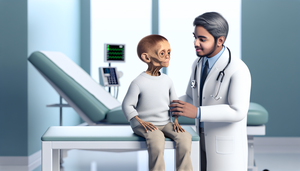
Progeria: Diagnosis and Differentiation from Other Premature Aging Syndromes and LMNA Mutations
Explore how genetic testing differentiates progeria from Werner syndrome in the context of premature aging.
Read more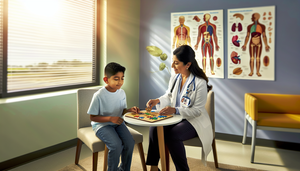
Lesch-Nyhan Syndrome: Detecting Self-Mutilation Behaviors and Differentiating from Other Causes of Hyperuricemia
Explore the diagnosis of Lesch-Nyhan syndrome and its differentiation from other hyperuricemias.
Read more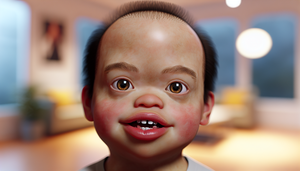
Williams Syndrome: Identifying Elf-Like Facial Features and Differentiating from Autism with 7q11.23 Genetic Testing
Discover how to identify the elf-like facial features of Williams syndrome and differentiate them from autism spectrum disorder.
Read more
Fanconi Anemia: Early Diagnosis and Differentiation from Other Aplastic Bone Marrow Disorders
Discover how early diagnosis of Fanconi anemia enhances prognosis by differentiating it from other bone marrow aplasias.
Read more
DiGeorge Syndrome: Assessment of Thymic Aplasia, Immunodeficiency, and Differentiation of Hypoparathyroidism in 22q11 Deletion
Explore the multidisciplinary management of DiGeorge syndrome, highlighting immunodeficiency and hypoparathyroidism.
Read more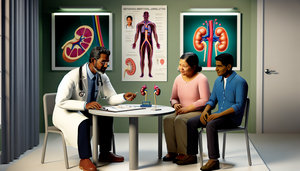
Alport Syndrome: Diagnosing Hereditary Hematuria and Differentiating IgA Nephropathy in Clinical Practice
Explore how to differentiate Alport syndrome from IgA nephropathy using renal biopsy and advanced techniques.
Read more
Gaucher Disease: Early Detection, Niemann-Pick Differentiation, and the Role of Bone Marrow Aspirate in Glucocerebrosidase Deficiency
Early detection and differentiation between Gaucher and Niemann-Pick diseases enhance treatment outcomes and prognosis.
Read more
Prader-Willi Syndrome: Early Diagnosis, Neonatal Hypotonia, and Angelman Differentiation
Early diagnosis of Prader-Willi syndrome is crucial for differentiating it from Angelman syndrome and improving clinical management.
Read more
Rett Syndrome: Key Insights for Early Detection and Differentiation from Autism Spectrum Disorder
Discover how to differentiate Rett syndrome from autism through clinical signs and genetic testing.
Read more
Angelman Syndrome: Early Signs Recognition, Differentiation from Prader-Willi Syndrome, and the Role of UBE3A Genetic Testing in Severe Developmental Delay and Epileptic Seizures
Discover how to differentiate Angelman syndrome from Prader-Willi syndrome for optimal clinical management.
Read more
Acromegaly: Identifying Clinical Signs and Differentiating from Gigantism with IGF-1 Testing
Discover how to clinically differentiate acromegaly from gigantism and the importance of the IGF-1 test.
Read more
Tourette Syndrome: Recognizing Persistent Motor and Vocal Tics and Differentiating Them from Transient Tics in ADHD Comorbidity
Discover how to differentiate between transient and persistent tics in Tourette syndrome for effective management.
Read more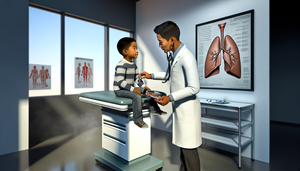
Cystic Fibrosis: Early Diagnosis, Sweat Test, and Differentiation of Bronchiectasis Causes
Discover how early diagnosis and genetic evaluation enhance the management of cystic fibrosis.
Read more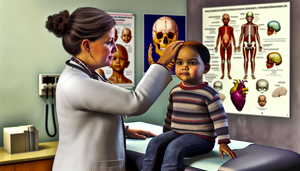
Apert Syndrome: Identifying Craniosynostosis and Differentiating from Crouzon Syndrome for Effective Corrective Surgery
Discover how to differentiate Apert syndrome from Crouzon syndrome for optimal surgical management.
Read more
Cushing's Syndrome: Initial Diagnosis and Differentiation from Common Obesity Using the Dexamethasone Suppression Test
Discover how to differentiate Cushing's syndrome from common obesity through specific testing.
Read more
Porphyria: Evaluating Acute Abdominal Pain and Differentiating from Cholecystitis Using the Hoesch Test and Urinary Porphyrins
Discover how to identify acute porphyria crises and differentiate them from other abdominal causes.
Read more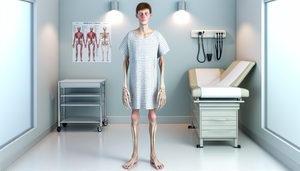
Marfan Syndrome: Detecting Skeletal Signs and Differentiating from Homocystinuria with Echocardiogram Insights
Discover how to differentiate Marfan syndrome from homocystinuria for accurate diagnosis.
Read more
Ehlers-Danlos Syndrome: Clinical Diagnosis and Differentiation from Osteogenesis Imperfecta Using Villefranche Criteria
Explore how the Villefranche criteria and advanced genetic testing enhance the differential diagnosis between Ehlers-Danlos syndrome and osteogenesis imperfecta.
Read more
Niemann-Pick Disease: Early Diagnosis, Gaucher Differentiation, and Managing Hepatosplenic Dysfunction
Early and accurate diagnosis between Niemann-Pick and Gaucher diseases enhances patient prognosis and treatment.
Read more